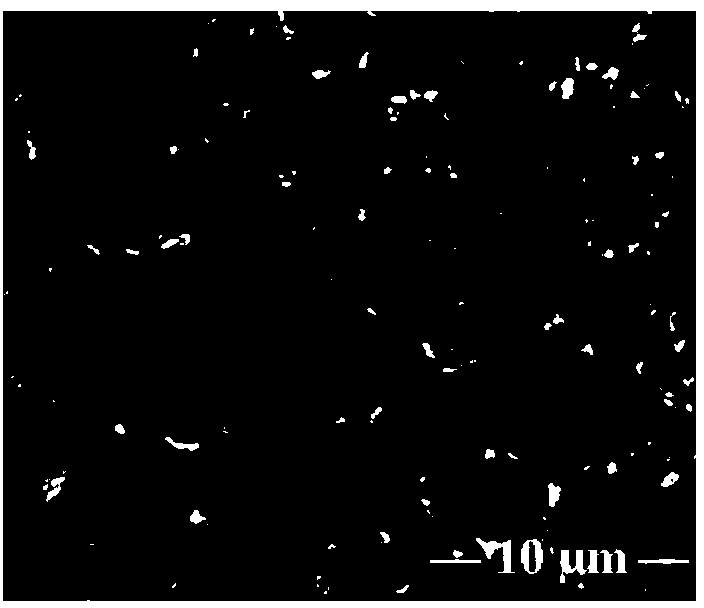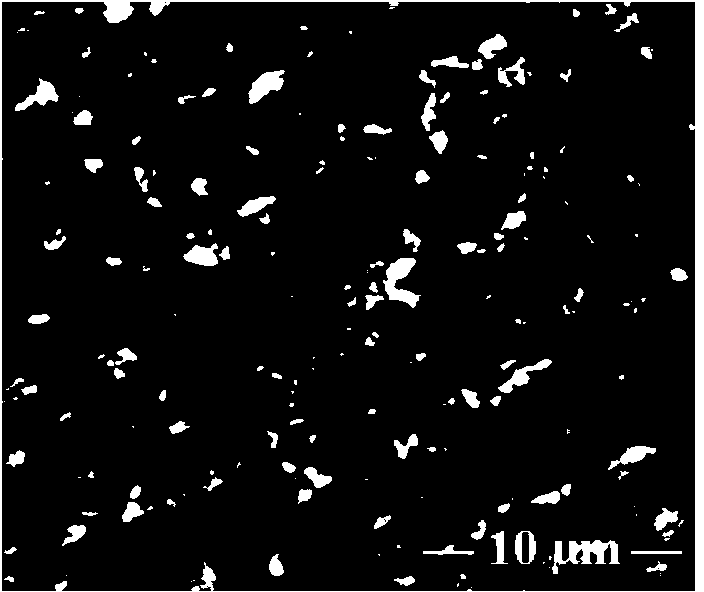Method for bonding carboxymethyl chitosan bioactive molecules on surface of magnesium alloy
A technology of carboxymethyl chitosan and bioactive molecules, which is applied in the field of surface modification of magnesium alloys, can solve problems such as easy corrosion, achieve simple operation, improve corrosion resistance and biocompatibility, and overcome the effects of easy falling off
- Summary
- Abstract
- Description
- Claims
- Application Information
AI Technical Summary
Problems solved by technology
Method used
Image
Examples
Embodiment 1
[0029] 1. Cathodic liquid phase plasma treatment
[0030] Use 2500-mesh and 5000-mesh sandpaper to polish the surface of the magnesium alloy until it is bright, remove the oxide layer on the surface, then use acetone to ultrasonically clean it for 3 times, each time for 5 minutes, then use 5000-mesh sandpaper to smooth the surface of the graphite rod, and then use ethanol to ultrasonically clean it. Wash 3 times, 5 minutes each time. Using 0.08mol / L NaCl water-ethanol solution as the electrolyte, the volume ratio of deionized water to absolute ethanol is 1:4, with the cleaned magnesium alloy as the cathode and the cleaned graphite rod as the anode, immersed in the electrolytic In the liquid, using a DC pulse power supply, adjusting the discharge voltage to 400V, the frequency to 100Hz, the duty cycle to 30%, and the distance between the cathode and the anode to 4cm, the cathode liquid phase plasma deposition is carried out on the magnesium alloy, and the discharge treatment ti...
Embodiment 2
[0038] In step 1 of the cathodic liquid-phase plasma treatment of the present embodiment, the water-ethanol solution of 0.05mol / L NaCl is used as the electrolyte, wherein the volume ratio of deionized water to absolute ethanol is 1:2, and a DC pulse power supply is used. The discharge voltage is 350V, the frequency is 150Hz, the duty ratio is 25%, and the distance between cathode and anode is 5cm. The magnesium alloy is subjected to cathodic liquid phase plasma deposition. The discharge treatment time is 20 minutes, and the MgO corrosion-resistant coating is formed on the surface of the magnesium alloy. . The other steps were the same as in Example 1 to obtain a magnesium alloy with surface-bonded carboxymethyl chitosan bioactive molecules.
Embodiment 3
[0040] In the cathodic liquid phase plasma treatment step 1 of the present embodiment, the water-ethanol solution of 0.12mol / L NaCl is used as the electrolyte, wherein the volume ratio of deionized water to absolute ethanol is 1:5, and a DC pulse power supply is used. The discharge voltage is 500V, the frequency is 130Hz, the duty ratio is 35%, and the distance between cathode and anode is 3cm. The magnesium alloy is subjected to cathodic liquid phase plasma deposition. The discharge treatment time is 10 minutes, and the MgO corrosion-resistant coating is formed on the surface of the magnesium alloy. . The other steps were the same as in Example 1 to obtain a magnesium alloy with surface-bonded carboxymethyl chitosan bioactive molecules.
PUM
 Login to View More
Login to View More Abstract
Description
Claims
Application Information
 Login to View More
Login to View More - R&D
- Intellectual Property
- Life Sciences
- Materials
- Tech Scout
- Unparalleled Data Quality
- Higher Quality Content
- 60% Fewer Hallucinations
Browse by: Latest US Patents, China's latest patents, Technical Efficacy Thesaurus, Application Domain, Technology Topic, Popular Technical Reports.
© 2025 PatSnap. All rights reserved.Legal|Privacy policy|Modern Slavery Act Transparency Statement|Sitemap|About US| Contact US: help@patsnap.com



